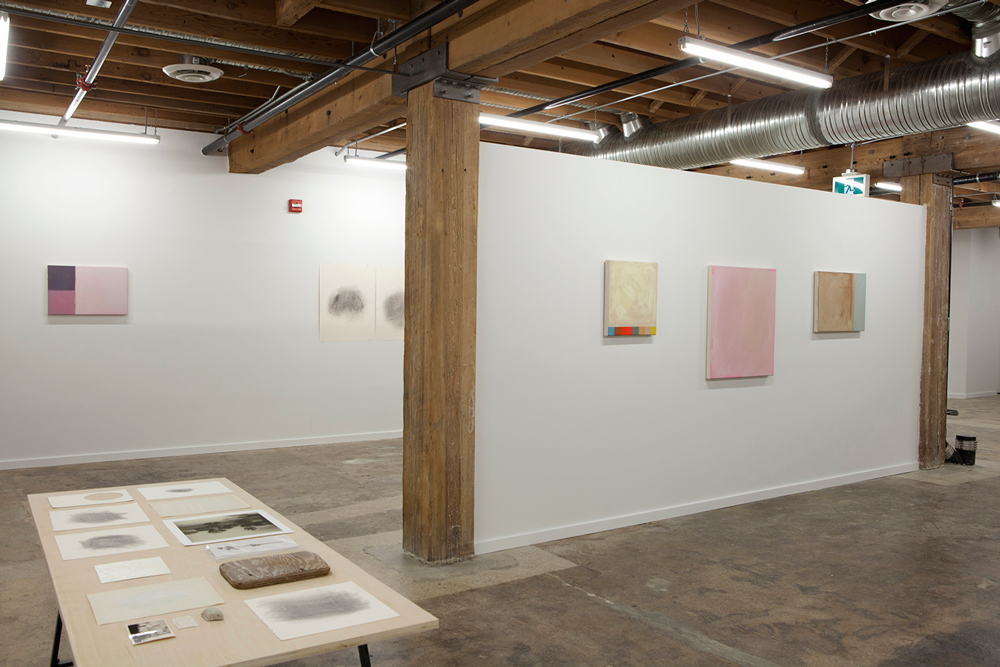American critic Walter Robinson coined the pejorative term Zombie Formalism last year to describe the prevalence and success of generic abstract art. In major art centres across the globe, he argues, scores of early and mid-career artists are painting with an essentialist, reductive approach. They’re making paintings about painting, raising those quaint Greenbergian aesthetics from the dead. Worst of all, says Robinson, these paintings are made to satisfy the voracious demands of the rapidly growing, largely unchecked art market. Rich collectors are snapping up middling works in record time; they look great in spare apartments punctuated by chic, high-end interior design.
Zombie Formalism, also known as Crapstraction, MFA Abstraction or Dropcloth Abstraction, is a global affliction. Galleries and art fairs the world over are apparently flooded with it. How does Canada fit into this? It’s not really our problem, is it? Our art market is a fledgling one at best. It does become our problem, though, if we want our artists to gain access to the international playing field, and I’ve been feeling conflicted lately, wondering if some of our artists fit the Zombie Formalist bill.
Derek Dunlop’s work, for example, currently showing at Lisa Kehler Art and Projects in Winnipeg, creates this kind of ambivalence.
Dunlop, who obtained his MFA at the University of British Columbia in 2006, is heavily invested in mining the possibilities of pure abstraction, the drawn line and the poetic associations of paper ephemera. His current body of work, End-Forms, explores colour and construction. He recently completed a residency at the Golden Foundation for the Arts in upstate New York, experimenting with every colour of paint that Golden produces. Dunlop’s breakthrough structure consists of making squares out of rectangular canvases. The residual strips of canvas, the end forms, so to speak, function in varying capacities. In Sully, the strip is a void, scrawled-in with lilac stripes. In Waning, the residual space is an anchor, holding the square in place. In several of the works, the end forms become unlikely colour charts: auburn abuts pink abuts harvest gold.
Dunlop’s work certainly bears many of the hallmark features that New York critic Jerry Saltz identifies in “Zombies on the Walls: Why does so much New Abstraction look the same?” It contains smudges, stains, stenciling. The de rigueur geometric forms are there. It nods to organic forms, and contains an impressive list of clever art-historical references: Robert Ryman, Jasper Johns, Kenneth Noland, Eva Hesse. It also has meta-critical underpinnings—in this case, subjective negotiation, phenomenology and, though less apparent in this body of work, queer theory.
It would be foolhardy to take Saltz’s list as universal truth. He specializes in brash, acerbic hyperbole. The terms “diluted,” “harmless” and “ersatz” are peppered throughout his piece, and he describes the collectors of these works as ‘’not very sophisticated.” But criticism like his and Robinson’s carries weight, and while he might overstate the Zombie Formalist case, its presence, and its motives, are notable.
Not having a significant art market within Canada is grievous in many regards, but it does allow for a greater trust between artist and audience. Particularly in our smaller centres, we rarely, if ever, suspect an artist of being “market driven.” Artists, in Winnipeg and elsewhere, have little to no control over the purchasing decisions of the ultra-wealthy. How, then, do we read work that has formal resonance with market-driven forms of work, such as Zombie Formalism, yet is ostensibly entirely removed from that realm?
Dunlop’s works are everything that people who love minimal abstract painting want; wonderfully plastic, yet hinting at the immaterial. Each of Dunlop’s paintings holds a subtle charge. The pale paintings, like Coax, are hushed, calm and show the artist’s ability to exercise restraint. Soft Passage is disquieting. Pairing blood red and grey, it is looser, more permissive. Dunlop’s drawings contain a complete vocabulary of hesitant marks: traces, fingerprints, haloes.
Perhaps the pervasiveness of so-called Zombie Formalism reflects our current state of atemporality. We live in a time when, thanks to the Internet, all art from all historical eras seems to exist at once. All contemporary abstract paintings contain the ghosts of their predecessors, and all of them are, in a way, just extrapolation. Artists like Dunlop must work hard to discover, and then assert, their own subjectivity.
Why blame the artist for the caprices of the art world? Let them go on making work. And let us go on discerning its merits, describing its auras and force fields, the ways it affects us and the ways it falls flat. Would Dunlop’s paintings look good in a chic, minimalist apartment? Good god, yes. Here’s hoping their restlessness, beauty and poetic gravitas won’t be lost on the buyer.









